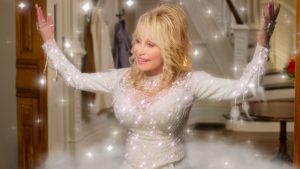As the only two members of the original Avengers line-up without either superhuman strength, durability, or flight, Scarlett Johansson’s Black Widow and Jeremy Renner’s Hawkeye tended to get sidelined in most of the Avengers movies where the enemies were usually a little too big or overpowered to be taken down by an arrow or a well-aimed high-kick. In Black Widow’s case, the MCU got around this problem by finding a place for her in the comparatively grittier, more grounded Captain America franchise, and then when she finally got her own movie earlier this year they just…removed the problem entirely and retroactively gave her superhuman abilities even though that went against her whole character.

But Hawkeye never got the chance to be a major supporting player in anyone else’s franchise, and he never got a solo movie. Following the release of Black Widow, he is in fact the only remaining member of the original six Avengers not to have their own solo film (with the caveat that Hulk technically has one; not with Mark Ruffalo in the lead role, but the MCU has increasingly treated it as canon anyway). That’s not going to change anytime soon, I don’t think – but that’s okay, because Hawkeye’s getting the full Disney+ treatment.
And now that we have our first teaser trailer for the Hawkeye series, I have…well, a lot of thoughts, but the thing that really stood out to me from the trailer is that Hawkeye isn’t suddenly getting a power upgrade just because he’s the star of the show now. He’s a really good shot with a bow…that’s it. There’s plenty of cool stuff Marvel can do with that powerset alone (go watch all of Legolas’ scenes in The Lord Of The Rings if you don’t believe me), while still acknowledging Hawkeye’s obvious weaknesses.
Frankly, those weaknesses are a big part of what makes the character even halfway interesting, because he can’t rely on his own strength and agility to save him in a fight, like most of the other Avengers. He’s dependent on his bow and arrow, and without it he’s just a relatively average middle-aged guy. Even with it, the bow is only truly effective as a long-distance weapon – Hawkeye has some training with swords thanks to his work as Ronin, but he’s probably not gonna last long in a duel: something he learned the hard way when he fought Black Widow on Vormir, in a last-ditch effort to stop her from throwing herself off that hateful cliff.
And while a lot of Avengers purposefully put distance between themselves and their loved ones because they can’t balance their personal commitments with their duty to the world, Hawkeye is one of the few who’s always been adamant that he can’t abandon his wife and kids, and that he’d rather give up his place on the Avengers team than do so. That gives him another crucial weakness, but it’s also theoretically one of his greatest strengths because he’s so human. His empathy and capacity for understanding are admirable qualities that never really found an outlet in the movies, and I hope Hawkeye does a better job in that regard.

The series picks up probably about a year after Endgame, during the middle of the Christmas season, and the trailer and other marketing heavily leans into the holiday spirit. I’m talking snow flurrying over the title-cards, a genius Christmas-themed tagline (“This Holiday Season The Best Gifts Come With A Bow”), and a Rockefeller Center action set-piece, all set to “It’s The Most Wonderful Time Of The Year”. Marvel’s closest thing to a Christmas movie is probably Iron Man 3 (one of those “if it’s set at Christmas but doesn’t actually have anything to do with Christmas, is it a Christmas movie?” movies), so this is kind of a surprise.
Now, Hawkeye is set to premiere in November and run through December, so this is obviously just a case of good timing on one level: but thematically, I think sticking the most empathetic Avenger into the season of giving and caring makes sense and could lead to some interesting and emotional character moments, not only between Hawkeye and his family (whom he takes into the city to go see Rogers: The Musical, a Broadway retelling of Captain America’s life that features Hawkeye as a backup dancer – awkward), but also between him and his young protégé, Kate Bishop.
Kate Bishop’s arrival in the MCU is an important milestone, bringing us one step closer to the formation of a Young Avengers team. Just like in the comics, it appears she’s run away from home to follow in Hawkeye’s footsteps, which includes honing her skills as an archer and donning a version of his purple uniform. In the comics, Bishop also emulates the super-spy Mockingbird, but we have no idea if Marvel plans to bring that character back after her appearance in Agents Of S.H.I.E.L.D., or if she would be played by Adrianne Palicki again.
Regardless, introducing Bishop here is logical, and it’s a good business move: Hawkeye has some fans, but Oscar-nominee and bestselling popstar Hailee Steinfeld brings with her an entire fanbase. She and the other women of Hawkeye, including Alaqua Cox as Echo and Vera Farmiga as Eleanor Bishop (both very briefly visible in the trailer), not to mention Florence Pugh as returning fan-favorite Yelena Belova, are the main reason we will be watching.

And none of these characters, at least as far as we know, have superpowers. That’s not to say there won’t be any, or that they couldn’t be handled well, but I do appreciate having a corner of the MCU where the “street-level” heroes don’t necessarily have to fight literal gods and monsters all the time. There’s just something so wonderfully relatable about Hawkeye attempting to zipline across Rockefeller Center and falling into the Christmas tree that not only harkens back to the lighthearted tone of the Matt Fraction comics that defined this character, but is also necessary in a franchise where heroes are too often invulnerable and untouchable.
Trailer Rating: 9/10








